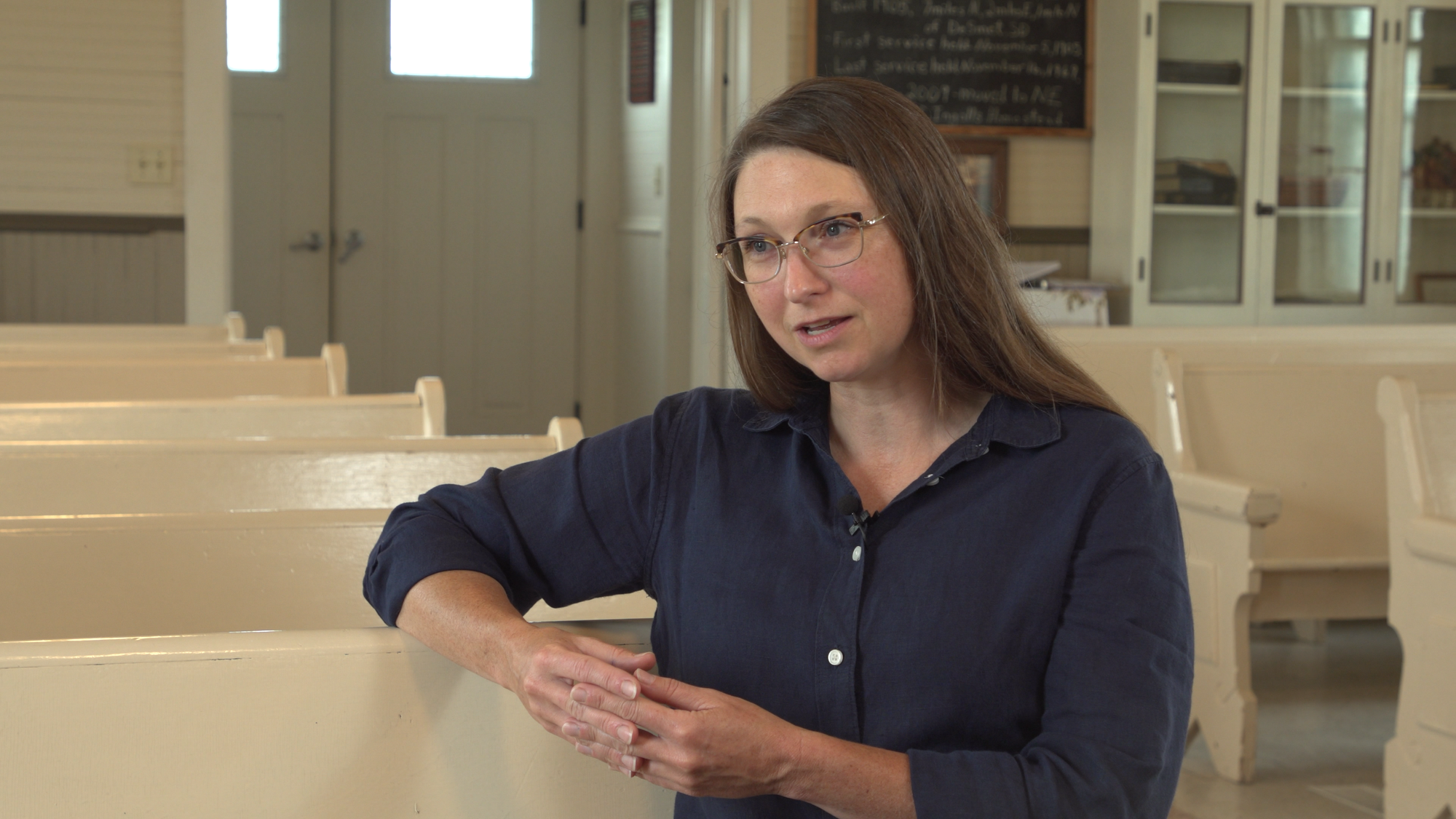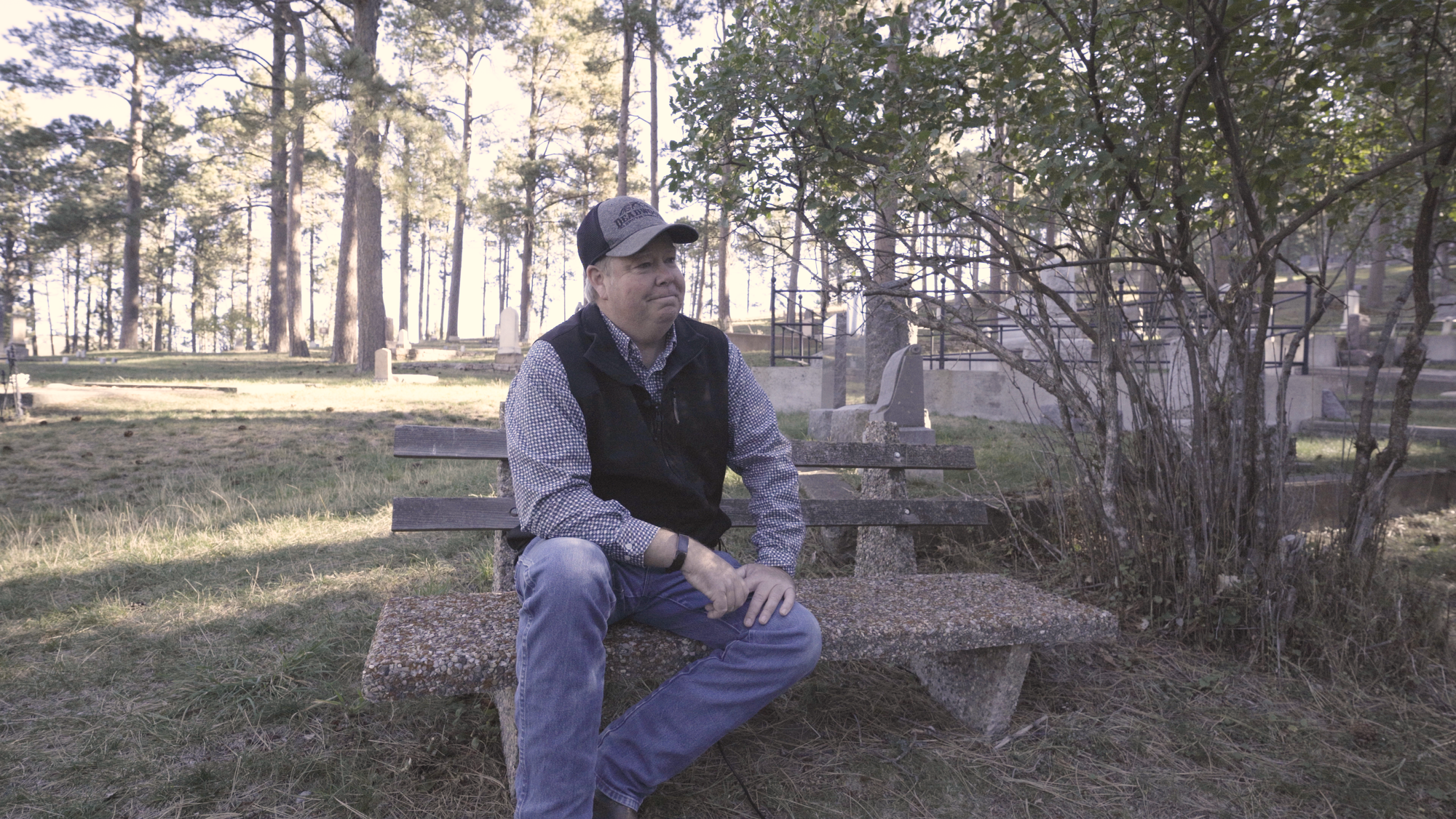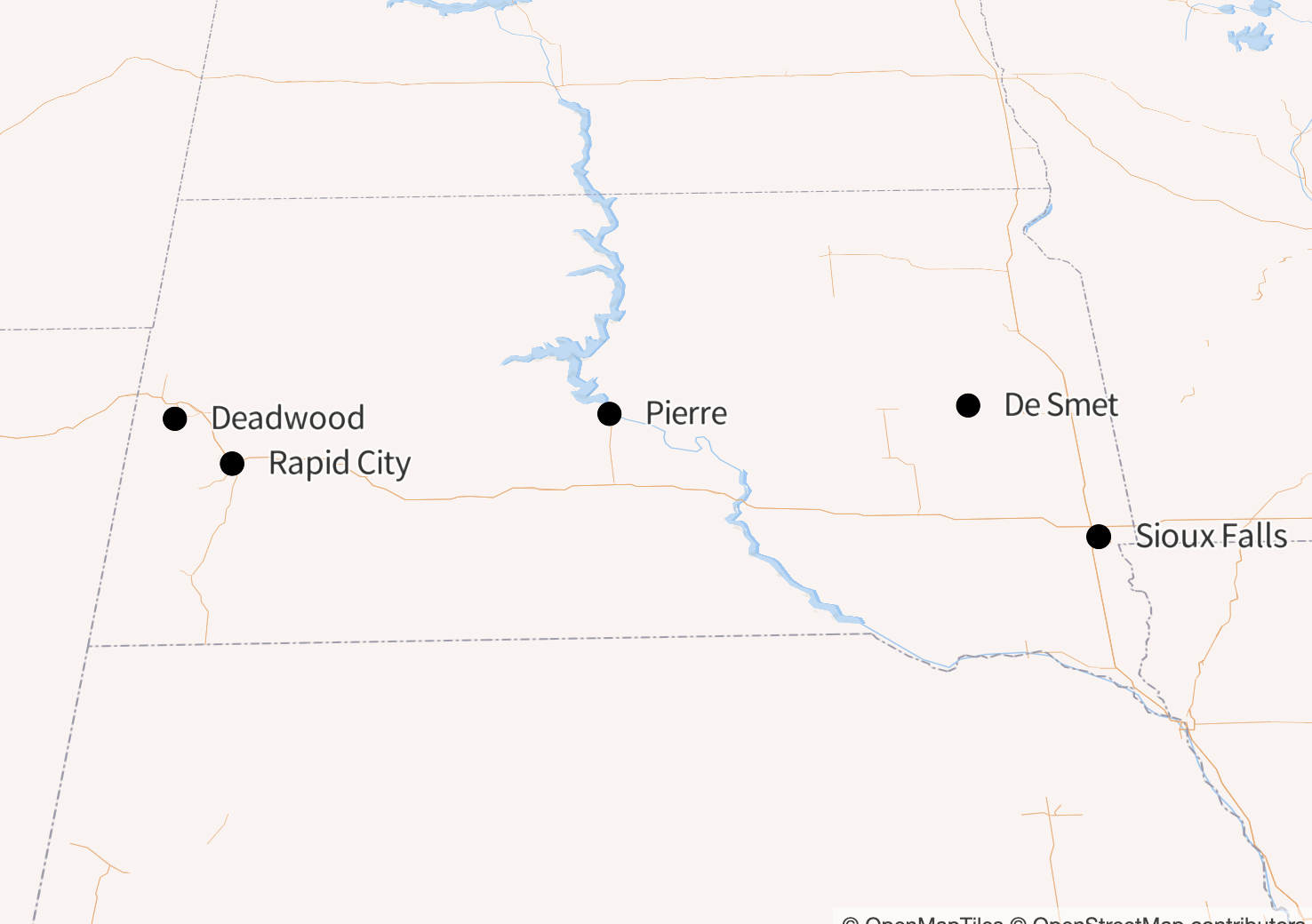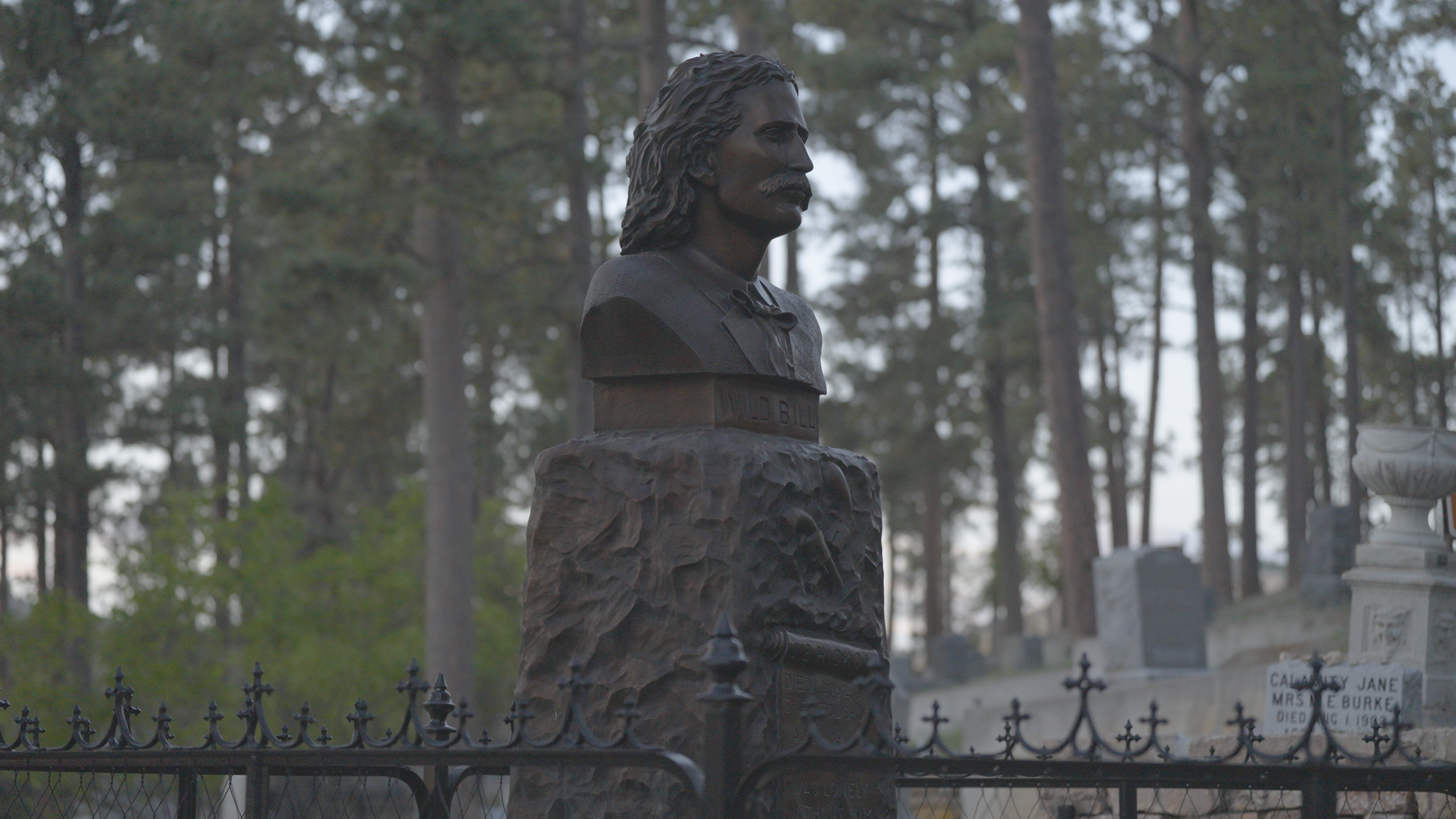
Jackie Hendry, South Dakota News Watch
DE SMET, S.D. – Hundreds of thousands of tourists every year frequent sites tied to South Dakota’s pioneer and Wild West history, and cemeteries are among the historic sites that bring the past to life for those visitors.
Jim Hagen, South Dakota Tourism secretary, said history lovers are one of the department’s main audiences. “Whether it’s Native American history and culture, pioneer, Old West … interest in South Dakota history but American history too. We have a ton of that in the state.”
A prime example is the Ingalls Homestead in De Smet, the setting for much of the “Little House on the Prairie” book series by Laura Ingalls Wilder. The series has been translated into dozens of languages and is the basis of a still-popular television series from the 1970s and 1980s. Hagen said no matter where he travels in the world, he sees an enduring interest in the stories of Ingalls Wilder.
“To take that pioneer history and to be able to share that in a marketing aspect to visitors to say, ‘Did you known that you can come and walk in Laura’s footsteps and experience this at the Ingalls Homestead? Or go into the city of De Smet and go through Ma and Pa’s house, and go through the museum, and see where they lived, and see where they’re buried?’ I mean, that’s huge.”
De Smet’s little cemetery on the prairie
This summer marked 53 years of the annual Laura Ingalls Wilder Pageant in De Smet. Local actors play out scenes from the “Little House on the Prairie” series on an outdoor stage for visitors from across the country.
Ann Lesch, Laura Ingalls Wilder Pageant board member and operations manager for the Ingalls Homestead, said this year’s pageant has a new script, the first of three to be performed over the next few summers.

“For many years, we told the stories that were directly from the books,” Lesch said. “But what we’ve done with these scripts is tell those same stories but through the eyes of Laura as she’s writing it and editing the books with her daughter, Rose. And their relationship as a writer and editor, mother, daughter is pretty unique in American history, to have that kind of relationship in literature.”
In addition to updating the pageant itself, the De Smet community has developed other programs during pageant weekends.
Tours of the De Smet Cemetery – where Charles and Caroline Ingalls, three of their daughters, and the infant son of Laura and Almanzo Wilder are buried – began as part of the 50th anniversary celebration of the pageant. Community actors read summaries of the lives of some of the residents.
The cemetery tours have resonated with visitors, Lesch said.
“It allows us to highlight the Ingalls family. We always choose one or two of the Ingalls family members,” she said. “But it also allows us to highlight some of the other community members that either were featured in the books, but just a little bit, or were not featured in the books because of the way Laura wrote the books, where she condensed characters together.”
One such De Smet resident is Aubrey Sherwood, whose father founded the local newspaper.
Sherwood took over the newspaper in 1929 and was an early advocate for preserving the history presented in the Ingalls Wilder stories. He also was an early tour guide, offering drives around the community to visitors who arrived at his newsroom wanting to know more about De Smet.
“So we always include Aubrey on our cemetery tours as well so that we can honor what he did for our community to help preserve our history,” Lesch said.
Celebrity death sells in Deadwood
Across the state in the Black Hills, Deadwood is home to one of the West’s most famous cemeteries, thanks to a few VIPs buried there.
Kevin Kuchenbecker, who works in Deadwood’s city planning, zoning and historic preservation office, said Mount Moriah Cemetery was founded in 1876, two years after the town, though the original was on lower, flatter ground.

“They needed that for development and moved some of the bodies up here,” he said, “including one of the most famous in Deadwood’s history, if not the Wild West, Wild Bill Hickok. He’s buried in this cemetery right beside Calamity Jane, who died in 1903. And we have Preacher Smith and Seth Bullock and a variety of other legends here.”

Mount Moriah Cemetery has been closed to new burials for 75 years. A $2 admission fee supports ongoing upkeep of the grounds.
“It’s just beautiful, sacred ground. But it is a tourist attraction. We get about 100,000 to 120,000 visitors a year that come up and pay homage to our Old West legends,” said Kuchenbecker. “People are drawn to those historic graves of celebrities, and Wild Bill Hickok is and was a celebrity.”
Deadwood’s connection to that Old West works in tandem with another industry: gambling.
“The most famous poker game in history was August 2nd, 1876, with Wild Bill getting shot and having the Dead Man’s Hand,” said Kuchenbecker, referring to the hand of aces and eights Hickok held when he was murdered by Jack McCall.

More than a century later, city leaders proposed low-stakes gambling as a funding mechanism to support the preservation of Deadwood’s historic buildings. Kuchenbecker sees the value in the relationship between the two industries for attracting visitors year after year.
“History is the lure, and then what are those distractions while they’re here? They can dine, they can shop, they can game, they can recreate.”
Since its legalization in 1989, the Deadwood Gaming Association reports about $2.6 billion in gross revenues for the industry in Deadwood. It also funds grants for paint, windows and siding repairs on historic buildings.
“Wild Bill Hickok getting shot while playing poker in Deadwood basically made the town,” said George Milos, executive director of the Deadwood Gaming Association.
Events like Deadwood’s annual Wild Bill Hickok Days, which celebrated 40 years this summer, daily reenactments during the summer months and the continued interest in history make the city a unique destination, he said.
“You can go anywhere and gamble. You can’t go anywhere and watch Wild Bill get shot three times a day,” Milos said.
